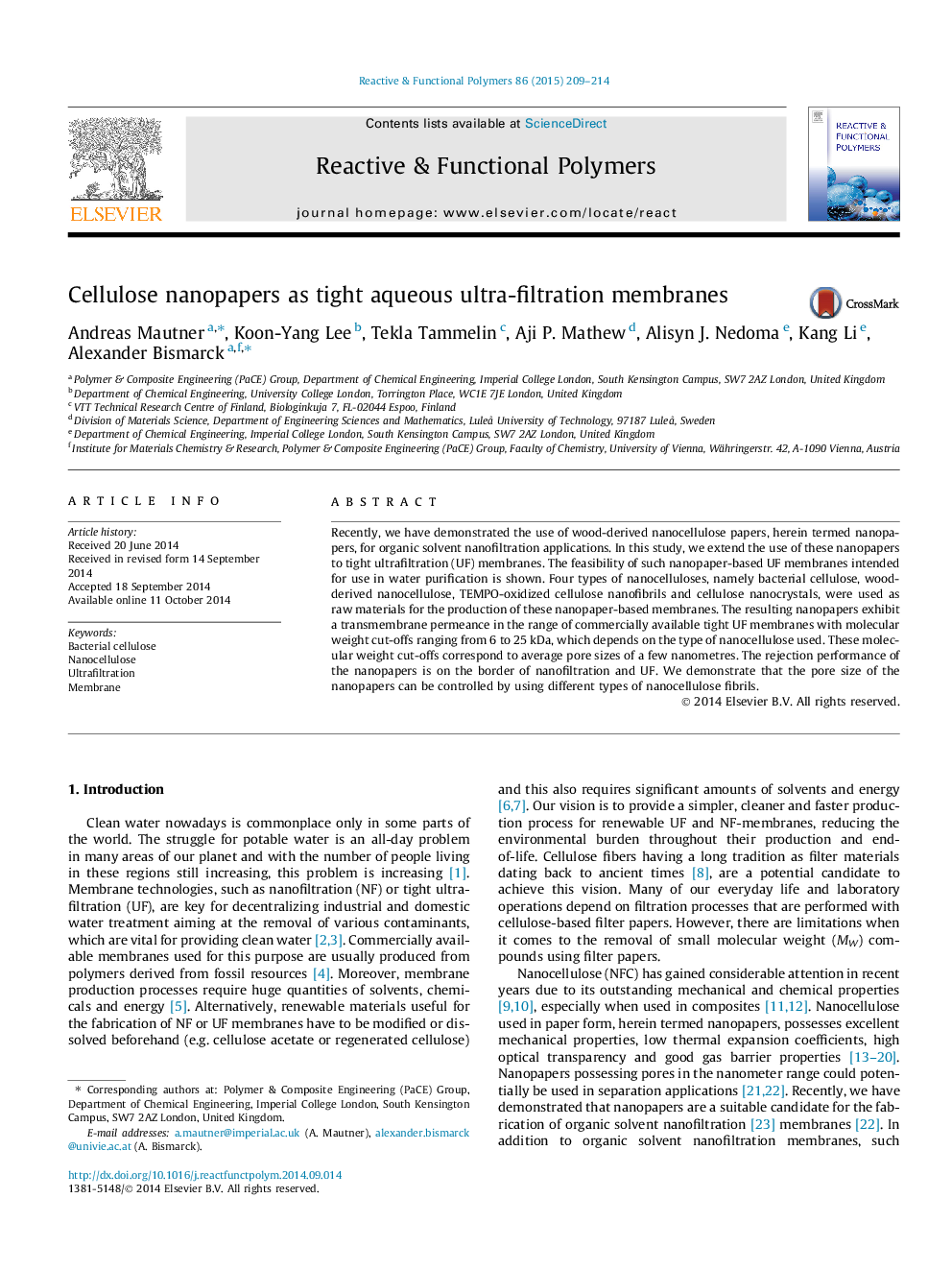| Article ID | Journal | Published Year | Pages | File Type |
|---|---|---|---|---|
| 5209882 | Reactive and Functional Polymers | 2015 | 6 Pages |
Abstract
Recently, we have demonstrated the use of wood-derived nanocellulose papers, herein termed nanopapers, for organic solvent nanofiltration applications. In this study, we extend the use of these nanopapers to tight ultrafiltration (UF) membranes. The feasibility of such nanopaper-based UF membranes intended for use in water purification is shown. Four types of nanocelluloses, namely bacterial cellulose, wood-derived nanocellulose, TEMPO-oxidized cellulose nanofibrils and cellulose nanocrystals, were used as raw materials for the production of these nanopaper-based membranes. The resulting nanopapers exhibit a transmembrane permeance in the range of commercially available tight UF membranes with molecular weight cut-offs ranging from 6 to 25Â kDa, which depends on the type of nanocellulose used. These molecular weight cut-offs correspond to average pore sizes of a few nanometres. The rejection performance of the nanopapers is on the border of nanofiltration and UF. We demonstrate that the pore size of the nanopapers can be controlled by using different types of nanocellulose fibrils.
Related Topics
Physical Sciences and Engineering
Chemistry
Organic Chemistry
Authors
Andreas Mautner, Koon-Yang Lee, Tekla Tammelin, Aji P. Mathew, Alisyn J. Nedoma, Kang Li, Alexander Bismarck,
